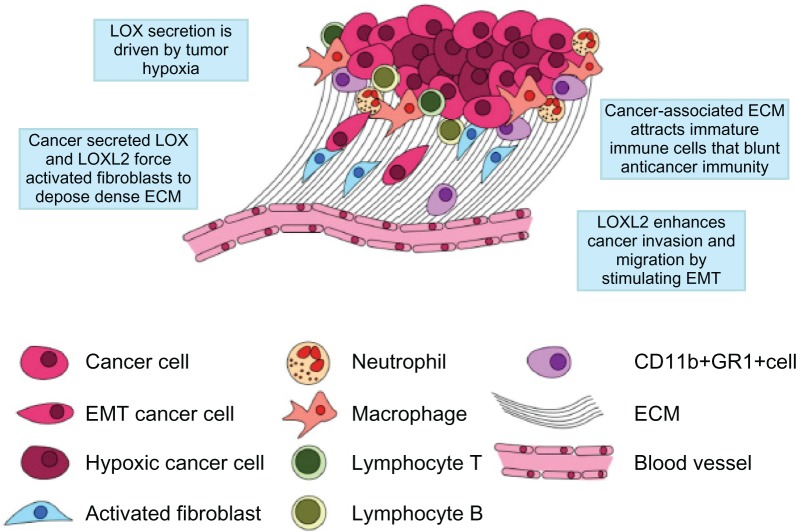Figure 2.
The cancer niche.
Notes: Just as bone marrow cells require a “niche” to maintain their character and complete their development, cancer cells require a specialized microenvironment to thrive. The cancer niche typically is backed-up by a densely woven ECM formed mainly of collagen I, collagen IV, fibronectin, laminin, and tenascin. This ECM serves as a physical scaffold for the tumor and as a path for stromal cells, such as immune cells and fibroblasts, to migrate along to the tumor mass and, inversely, as a way for tumor cells to escape from the tumor and enter circulation. LOX and LOXL2 expression is induced by tumor hypoxia and mediates the cross-linking of collagen. The LOX family is a central player in cancer related fibrosis, which results in the constant recruitment of protumor stromal cells (ie, cancer-associated inflammation). Additionally, LOXL2 induces epithelial mesenchymal transition, a process that allows tumor cells to acquire fibroblast-like mobility.
Abbreviations: ECM, extracellular matrix; EMT, epithelial mesenchymal transition; LOX, lysyl oxidase; LOXL2, lysyl oxidase-like 2.

